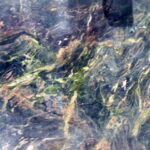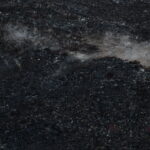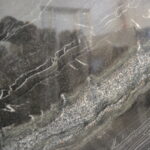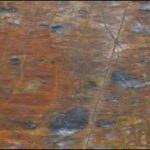There are so many options to chose from when deciding on countertops. Natural stone countertops like granite, marble, soapstone, and quartzite offer great durability. Manufactured countertops, such as engineered quartz, laminate, and solid surface can be made to fit any area and are available in wide variety of colors and styles. Among metal countertops, stainless steel is the most common, but copper and zinc can also be used. For a more green kitchen, eco-friendly materials such as bamboo, recycled wood, Bio-Glass, and recycled glass are available. As if that wasn’t enough, countertops are also made from concrete, wood, and tile.
This is the first in a series of articles that will cover what you need to know about the most popular countertop materials available today. Our series will start off with the beautiful, durable, and easily confused quartzite.
What is Quartzite?
When sandstone is subjected to high temperatures and pressure within the earth, quartzite is produced. The quartzite is then taken from the ground and cut into large slabs. These slabs can then be cut more precisely and polished for use as countertops. Quartzite countertops should not be confused with quartz countertops, sometimes called engineered quartz countertops. Quartzite is cut from large deposits of natural stone in a similar way to granite or marble. Engineered quartz countertops are manufactured from quartz crystals, resin, and dyes.
Durability of Quartzite Countertops
Quartzite can handle high temperatures and is one of the hardest countertop materials available, even harder than granite. It has a rating of 7 to 8 on the Mohs Scale (the Mohs Scale measures hardness, 10 being the hardest). Granite usually rates around 6 to 6.5. Although it is very hard, quartzite can still be scratched, so use of a cutting board is recommended.
Quartzite Countertop Maintenance
Like all natural stone countertops, quartzite does need to be sealed. It is recommended that quartzite countertops be sealed upon installation and resealed once or twice per year after that. Improper sealing could lead to permanent stains.
Quartzite Variation and Color
In its most natural and pure form, quartzite is light gray and streaky. When other minerals are present in the quartzite, it’s colors vary widely and can include orange, pink, red, blue, yellow, and green. Quartzite also comes in a stunning variety of patterns, a few of which can be seen in the pictures of slabs available from newyorkstone.com
[vc_row][vc_column width=’1/4′] [/vc_column][vc_column width=’1/4′]
[/vc_column][vc_column width=’1/4′] [/vc_column][vc_column width=’1/4′]
[/vc_column][vc_column width=’1/4′] [/vc_column][vc_column width=’1/4′]
[/vc_column][vc_column width=’1/4′] [/vc_column][/vc_row]
[/vc_column][/vc_row]
Cost of Quartzite
Quartzite countertops can be bought for as low as $60 per square foot, but can cost more depending on the complexity of the job, because of the cutting process, the amount of quartzite purchased, and the exact color and pattern desired. For a more accurate price estimate please contact your preferred supplier.




